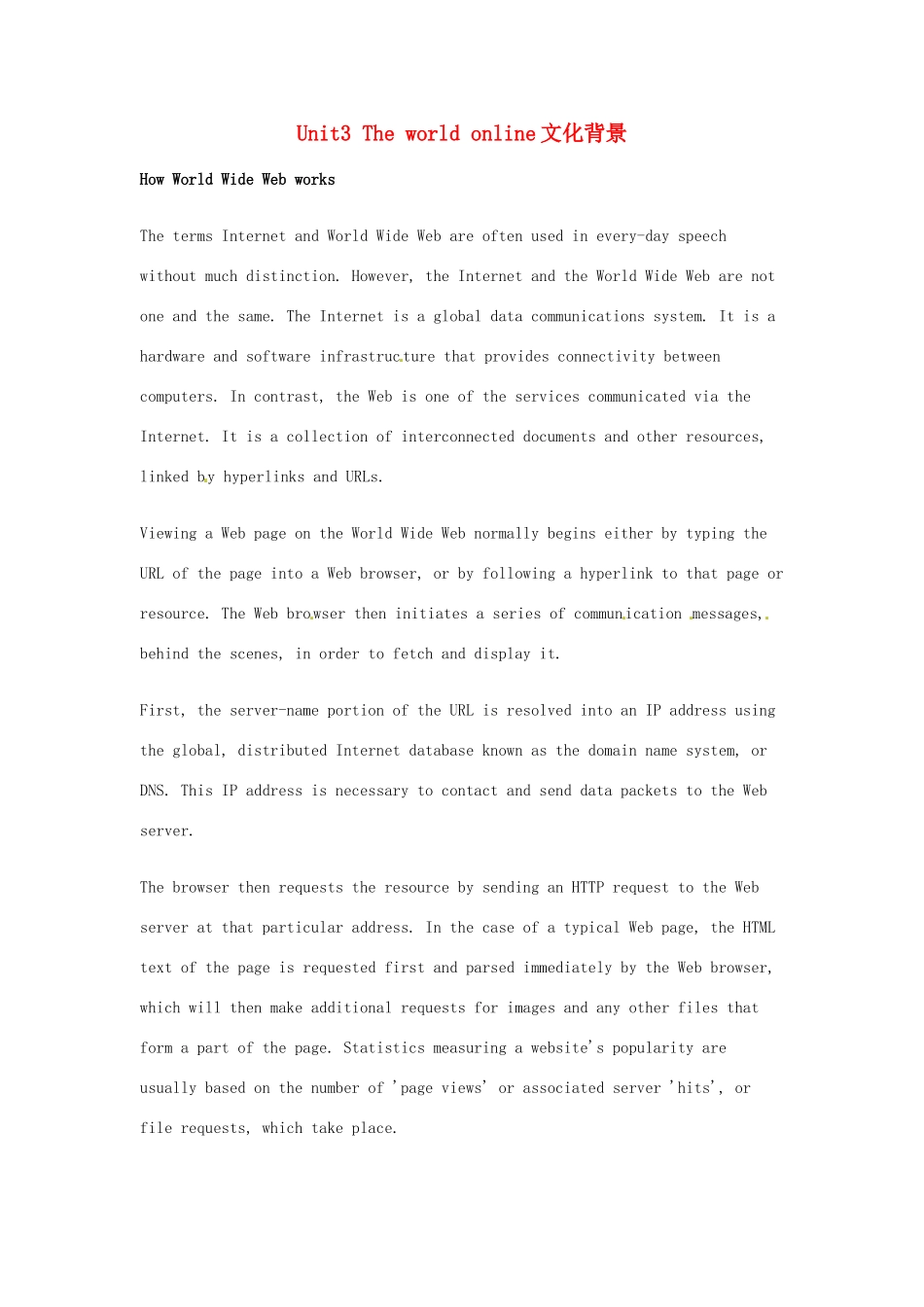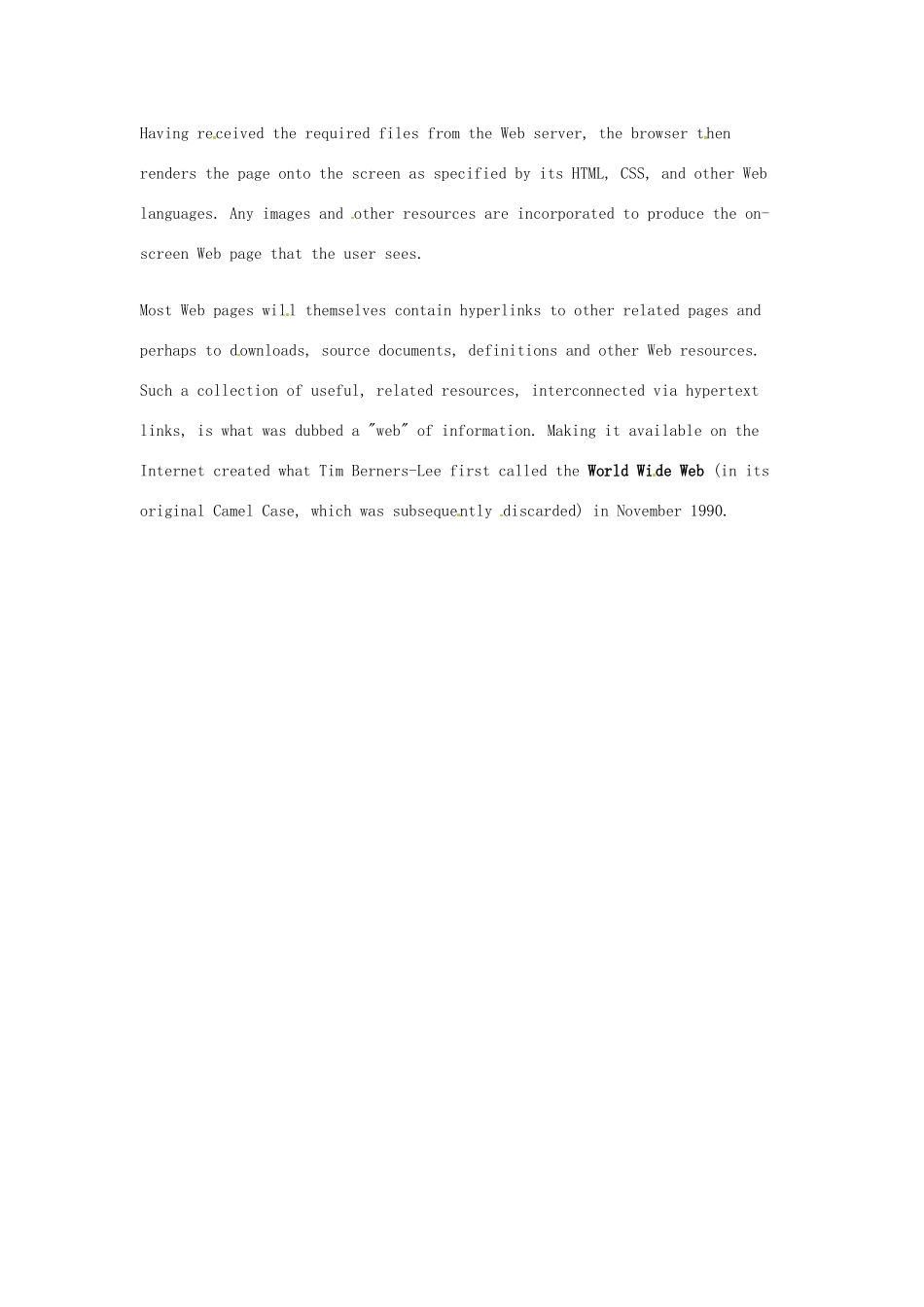Unit3 The world online 文化背景How World Wide Web worksThe terms Internet and World Wide Web are often used in every-day speech without much distinction. However, the Internet and the World Wide Web are not one and the same. The Internet is a global data communications system. It is a hardware and software infrastructure that provides connectivity between computers. In contrast, the Web is one of the services communicated via the Internet. It is a collection of interconnected documents and other resources, linked by hyperlinks and URLs.Viewing a Web page on the World Wide Web normally begins either by typing the URL of the page into a Web browser, or by following a hyperlink to that page or resource. The Web browser then initiates a series of communication messages, behind the scenes, in order to fetch and display it.First, the server-name portion of the URL is resolved into an IP address using the global, distributed Internet database known as the domain name system, or DNS. This IP address is necessary to contact and send data packets to the Web server.The browser then requests the resource by sending an HTTP request to the Web server at that particular address. In the case of a typical Web page, the HTML text of the page is requested first and parsed immediately by the Web browser, which will then make additional requests for images and any other files that form a part of the page. Statistics measuring a website's popularity are usually based on the number of 'page views' or associated server 'hits', or file requests, which take place.Having received the required files from the Web server, the browser then renders the page onto the screen as specified by its HTML, CSS, and other Web languages. Any images and other resources are incorporated to produce the on-screen Web page that the user sees.Most Web pages will themselves contain hyperlinks to other related pages and perhaps to downloads, source documents, definitions and other Web resources. Such a collection of useful, related resources, interconnected via hypertext links, is what was dubbed a "web" of information. Making it available on the Internet created what Tim Berners-Lee first called the World Wide Web (in its original Camel Case, which was subsequently discarded) in November 1990.

